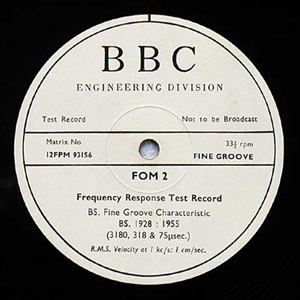
As can be seen from the label it complies with the British Standard Fine Groove Characteristic BS 1928:1955 with time constants of 3180, 318, and 75µs specifying turnover frequencies in round figures of 2120, 500 and 50Hz. This curve is identical to the RIAA curve and is the playback curve that has been used for all commercial 45 and 33 1/3-rpm records since 1953.
Prior to 1953 the situation was somewhat chaotic with record companies using their own ideas on equalisation for fine groove recordings in much the same way that they did for 78-rpm records. (In the early 50s it used to be said that a good record should sound like hi-fi on equipment that isn't!) Since standardisation seemed impossible, in 1950 the Audio Engineering Society of the USA proposed a standard playback curve hoping that manufacturers of record players and amplifiers would adopt it. It was thought that this would then force the record manufacturers to produce records that would sound OK when played on this equipment. The curve was designed so that even if record manufacturers did not accept it, the errors on playback, given the variety of equalisation in use at the time, would not exceed 2dB. It would also give acceptable results for most contemporary 78-rpm discs provided that they had been recorded with some high frequency pre-emphasis.
In 1953 the curve was slightly modified and adopted by all concerned. It was known initially as the New RIAA - AES - NARTB - RCA New Orthophonic Playback Curve and later adopted as the British Standard. The curve is still used unchanged today except for the IEC amendment introducing an additional time constant of 7950µs for a turnover frequency of 20Hz which is intended to reduce rumble, but many amplifier manufacturers apparently ignore this on the assumption that their customers will be using high quality turntables.
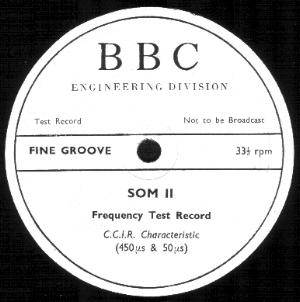
LPs were used by the BBC to send programmes to broadcasters in the Commonwealth and elsewhere. It was possible to record 30 mins on each side (for example two episodes of The Goon Show) and the shipping costs were far lower than using tape. I don't know whether this equalisation was continued after the introduction of the RIAA curve. It certainly did not appear as a switched option on any studio equipment I ever used.
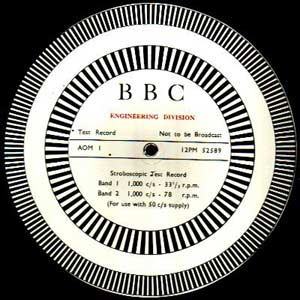
33 1/3-rpm coarse groove disks were widely used at one time. A 16-inch disk with a pitch of 120 grooves per inch could accommodate 15 mins and a 17¼-inch disc 15¾ mins thus a 30 min programme could be accommodated on two single-sided disks. As there was a drop in high frequencies towards the end of the disk, even with radius compensation, disks were cut alternately outside-in and inside-out so that there would not be a disturbing change in quality from one disk to the next. Minimum cutting diameter was 7½ inches.
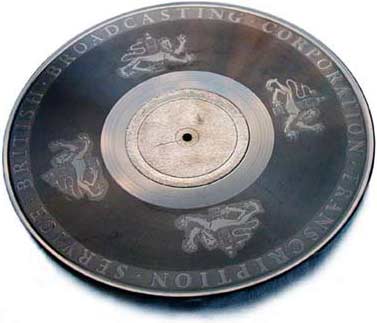
Next, an SOM3. On the modulated side are three piano pieces, unbanded and un-announced, lasting about 15mins and recorded at 33 1/3rpm.
But it's the reverse side that's worth a look!
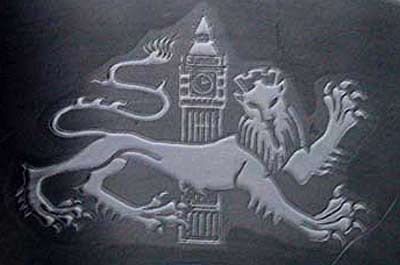
left: A detail of the SOM3 reverse side.
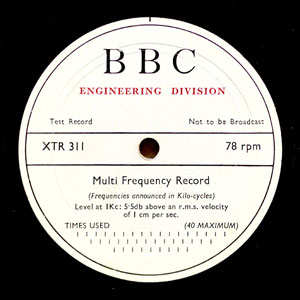
It is essential to have a standard by which the frequency/velocity relationship on different machines may be maintained at reasonable uniformity. The frequency/velocity relationship of the BBC test record XTR 311 approximates the BBC recording characteristic for 78 r.p.m. and the overall characteristic obtained from this record (i.e., the curve relating constant input volts to the recording amplifier with reproduced volts at the output of the reproducing amplifier) is used to maintain a uniform recording characteristic. The method employed is to record tone at the same frequencies and cutting speeds as on XTR 311, and compare the overall characteristic of the recorded disk with that of the test record, using the same reproducing needle, pickup and amplifier. Correction to the curves thus obtained is then applied, such correction being based on the slight difference between XTR 311 and the true BBC characteristic.
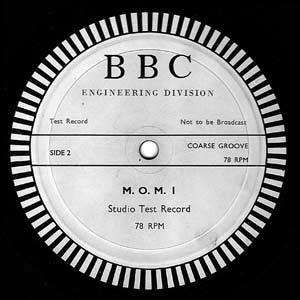
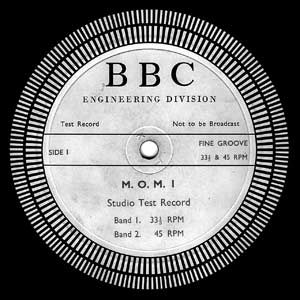
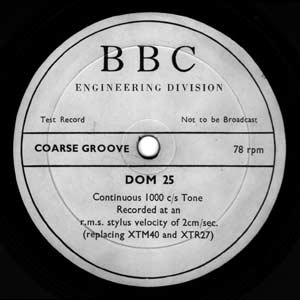
Right: The DOM 25 was 78rpm both sides with 1K tone.
Below: A 1988 45rpm record, TG1, with test tones on one side and an orchestral sample on the other.
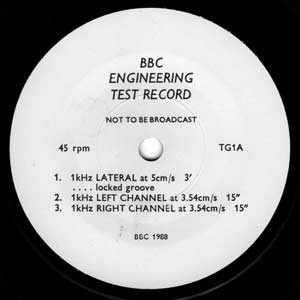
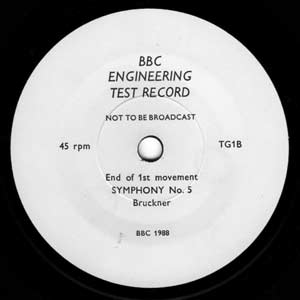
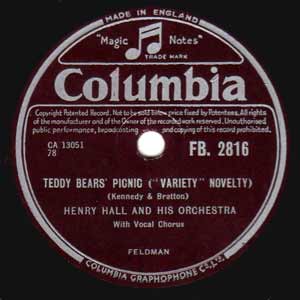
left: A more entertaining test record was 'The Teddy Bears' Picnic' a copy of which could be found in many studios. It was probably chosen because it had, for that time, a wide range of frequencies and was useful for a quick aural check that all was well. Here's an edited version:
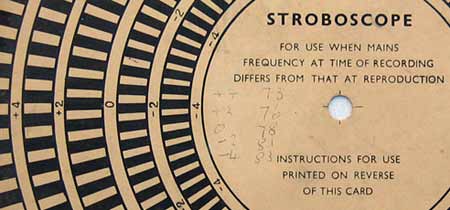
Finally, not a record but a card stroboscope the purpose of which is clear from the text!
The instructions, below right, are printed on the reverse.
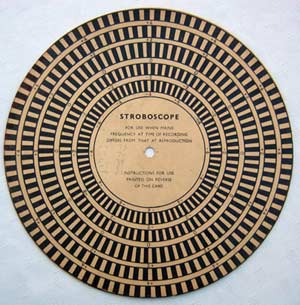
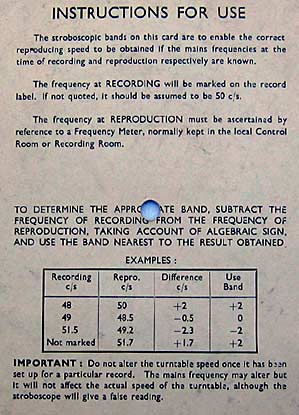
I have kept to the BBC convention that a direct recording was a 'disk' (not disc) and that a 'commercial gramophone record' (CGR) was a 'record'. 'Disc' was treated as a colloquial word for a CGR and its use was deprecated within the BBC. I don't recall that anybody took any notice of this except in staff instructions and training manuals. - B.T.

